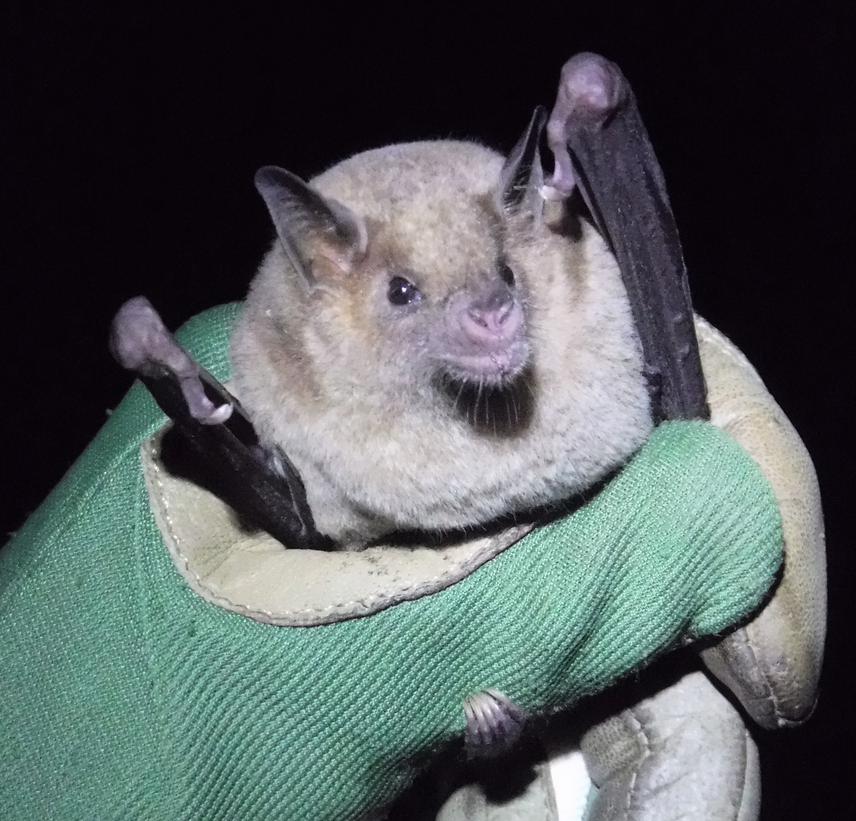Kristen Marie Lear
Other projects
31 Jan 2017
Building Local Capacity for Conserving the Endangered Mexican Long-Nosed Bat and its Habitat through Community Bat-Friendly Agave Management in Northeast Mexico
The ultimate goal of this project is to contribute to the development of agave habitat restoration programs in northeast Mexico that will aid in the conservation of the endangered Mexican long-nosed bat (Leptonycteris nivalis). The research components of this project will provide much-needed information about the bats’ foraging requirements and the best ways to encourage adoption of agave programs in northeast Mexican communities. Through this project, we will also conduct bat educational programs with communities and other stakeholders to gain local support for conservation efforts. Our work is an important part of a larger, range-wide initiative to restore the migratory “nectar corridor” of the endangered Mexican long-nosed bat.

Endangered Mexican long-nosed bats (Leptonycteris nivalis) rely on the nectar of agave plants as an important food source during their annual long-distance migration, making the maintenance of agave habitat a priority for the species’ conservation. However, these habitats have suffered high levels of degradation due to agave harvest and conversion of land to agriculture. Proactive conservation measures that directly involve local stakeholders, such as community agave restoration programs, are greatly needed to prevent the species’ extinction. However, little is known about the species’ foraging requirements or how to best garner participation of local communities in conservation efforts. This project will fill these knowledge gaps and will inform the development of agave restoration programs, particularly in northeast Mexico, home to two important roosting caves for the species.
Through a Rufford Small Grant in 2017, I collected baseline bat foraging data, developed community engagement guidelines, and identified several candidate communities for agave programs in northeast Mexico. With a 2nd Rufford Small Grant in 2018, I am continuing this work to address the following research objectives:
1) Determine agave and landscape characteristics that provide high quality food resources for bats;
2) Determine the optimal spatial arrangement of flowering agaves on the landscape to maximize bats’ energy intake;
3) Identify the agave restoration practices that are most likely to be adopted and the most effective incentives to encourage their adoption;
4) Understand the long-term impacts of agave restoration programs on agave populations and community livelihoods.
I am using an integrative approach that combines the natural and social sciences to complete these objectives. Specifically, I am conducting bat foraging studies, agave surveys, statistical modeling, and agent-based modeling, combined with semi-structured interviews and ethnobotanical surveys with community leaders and agave harvesters.
In addition, education of local communities, Protected Area managers, and other stakeholders is a key focus of this project. I am continuing to work with my local partner organization (Especies, Sociedad y Habitat, A. C.) to develop educational programs that will highlight the importance of pollinating bats and their conservation. We will also host a Mexican long-nosed bat symposium for Protected Area managers and other stakeholders, which will be important in helping us garner local support for conservation efforts.
Ultimately, this project is an important step toward creating a network of agave restoration programs that will restore the migratory “nectar corridor” that is critical to the survival of the Mexican long-nosed bat.